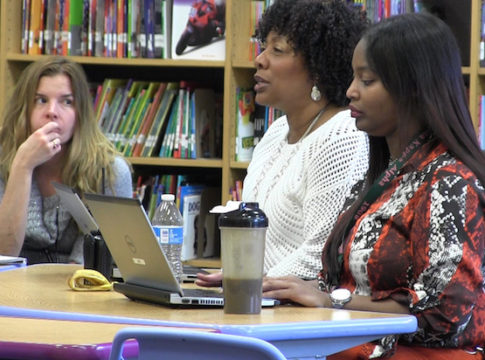My colleagues, Lucy and Dana, recently released a report about building parent and community demand for school turnarounds. Below they discuss their motives and findings.
– Bryan Hassel
A commenter responded to a recent blog post by Bryan and Emily Hassel on the need for rapid retry when turnarounds fail by pointing out that “the people in the community surrounding a school are not a ball to be played with.” The Public Impact team could not agree more.
So, we spent the past year gathering advice from 28 leaders of community-based organizations, school districts, school turnaround providers, faith-based organizations and other groups across the country. As we interviewed people, we heard a refrain: school reform efforts are tenuous, opposition is strong. It is past time for school reform leaders to make genuine efforts at community and family engagement. As one frustrated interviewee put it, “community support would be the wind at our back that could make all the difference. It should be our highest priority.”
Here are highlights from our presentation about what these change leaders have learned:
Building demand is worth the effort – but challenging. The potential upsides are huge. When parents are engaged, some evidence indicates that children do better academically and that change efforts are more likely to succeed. In rare cases where community members have demanded dramatic changes in low-performing schools (e.g. Los Angeles Parents Union), opponents of change found it difficult to argue against the will of the community. Conversely, not engaging the community leaves parents feeling powerless – and susceptible to organized opposition.
But building relationships takes time, a problem for leaders seeking rapid change in failing schools. Good engagement also requires giving community members some control over the effort, a risk some reformers are unwilling to take.
Communities resist change efforts for good reasons, sometimes. These include weak relationships with reformers, a history of poor communication, failed past reform efforts, and little understanding of how much better schools can be. Proactively addressing each challenge is essential.
Effective engagement strategies The major takeaways from our detailed presentation include:
- Show community members what is possible – and how their own schools fall short. Give people examples of high-quality schools. School visits and personal testimony are better than dry performance data.
- Early on, be transparent and clear about the decision-making role of the community. If you are giving the community a role, make it genuine, and explain limitations of that role early.
- Counter critics by touting successes. From the beginning, be vigilant in disseminating information about successes. “Early wins” are an effective way to silence critics.
- Manage expectations. Indicate that there will be some setbacks, and then share results openly. Admit problems as they arise and change course to solve those problems.
- Recognize that trust takes time – don’t emphasize urgency over relationships. With families, balance a sense of urgency with building support for change. Engage and listen early and often, long before decisions are made.
– Lucy Steiner and Dana Brinson




